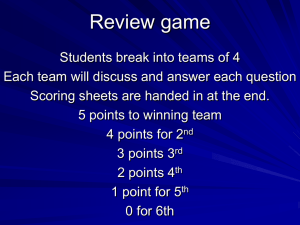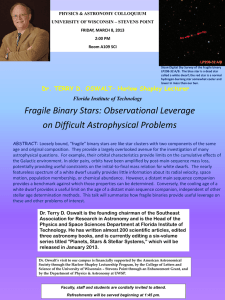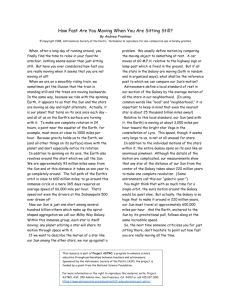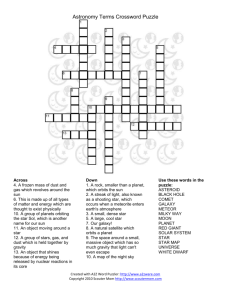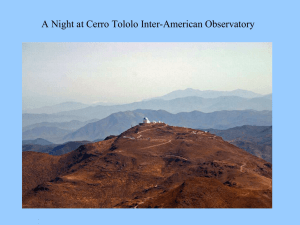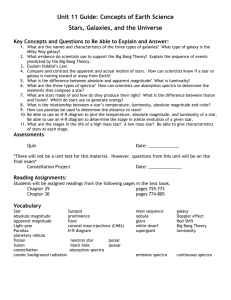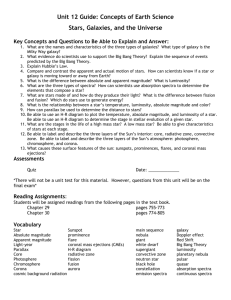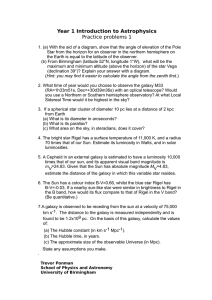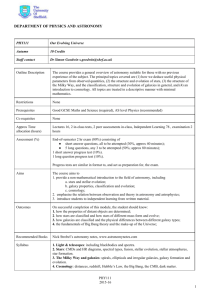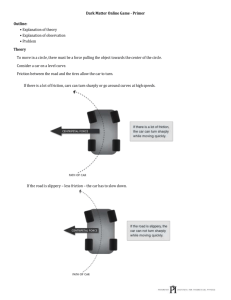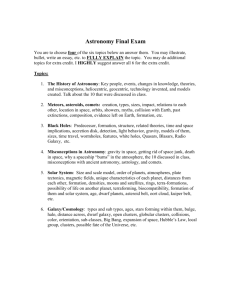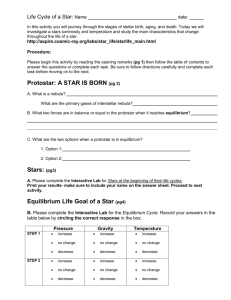FCV_AppliScience_Fergus - Frontiers in Computer Vision
advertisement
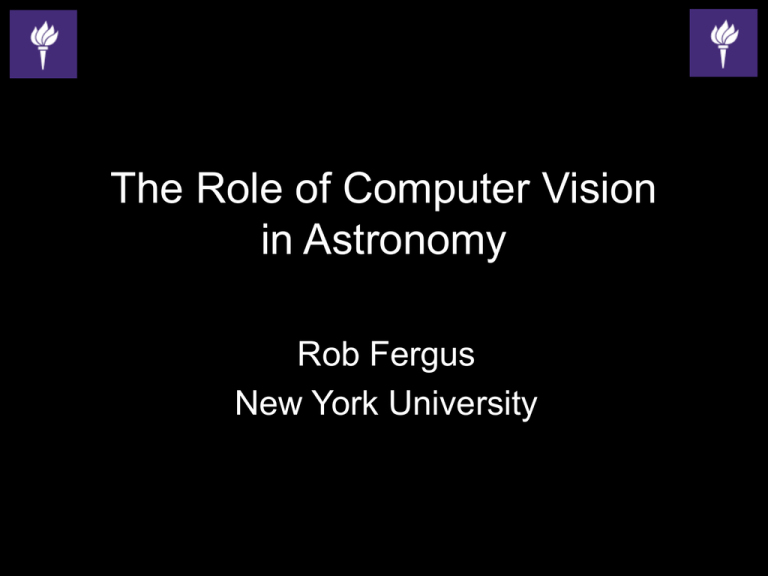
The Role of Computer Vision in Astronomy Rob Fergus New York University Overview • Virtually all our knowledge about the universe derived from measurements of photons – Usually as images • Big astronomy project is $50M-200M – But only 1-2% of this on software • Just discovering techniques from computer vision & machine learning Astrometry.net • Input: image of sky • Output: – Absolute position – List of objects • Geometric hashing (quads of stars) – Lamdan & Wolfson [ICCV’88] • Widely used by pros & amateurs Lang, Hogg, Mierle, Blanton & Roweis, [The Astronomical Journal, Vol. 137, 201 Removing Atmospheric Distortions • Ground-based telescopes look through atmosphere • Blind (online) estimation of atmospheric distortion and true image • Far better than “lucky” imaging (current approach) Hirsch, Harmeling, Sra & Schölkopf , [Astronomy & Astrophysics 2011] Hirsch, Sra, Schölkopf & Harmeling, [CVPR 2010] Exoplanet Imaging • Want to image planets around other stars • Need contrast ratio >1010 for Earth-like planets • Diffraction in telescope – Light from star obscures planet • Deconvolution problem – Big assistance from optical design Crepp et al., [Astrophysical Journal, Vol. 729, 2011]. Galaxy / Star Classification Star vs Galaxy [Sloan Digital Sky Survey] Galaxy / Star Classification • Distinguish stars from galaxies Star s • SVM-based models – Smith et al. [A & A, Vol. 522, 2010] • Generative model of galaxies – Lang et al. [In preparation] Data Model Galaxie s Future Directions • Unified Bayesian model • Propagate uncertainty from pixels • Physicsinformed priors Funded by NSF CDI Cosmology • Bayesian approaches to fitting high-level cosmological models http://cmml2011.wikispaces.com/ Cosmic Ray Classification • Raw image from Hubble Space Telescope:


